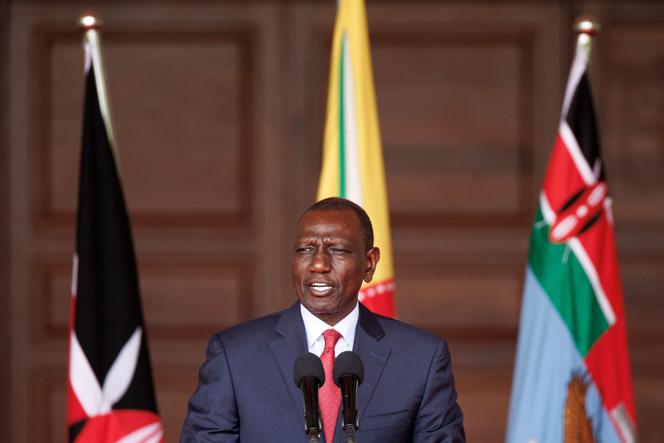
Kenyan President William Ruto dismissed almost his entire government on Thursday, July 11, two weeks after violent riots left at least 41 people dead in Kenya. A concession to the protesters who, after having obtained the withdrawal of the budget law at the end of June, were demanding the president’s resignation.
“Recent events that necessitated the withdrawal of the Finance Bill, which will require a review and reorganization of our budget and fiscal management, have brought us to an inflection point,” said a tight-faced Ruto at a press conference at the Kenyan presidency in Nairobi, explaining his decision to dismiss the entire government with the exception of Musalia Mudavadi, who holds the foreign affairs portfolio, and Vice President Rigathi Gachagua.
As a guarantee of a fresh start, the head of state promised to form a government of national unity to “deal with the burden of debt, raising domestic resources, expanding job opportunities, eliminate wastage and unnecessary duplication of a multiplicity of government agencies and slay the dragon of corruption.” These words fool no one in Kenya: In a 2019 poll, Ruto was considered to be the country’s most corrupt politician – a reputation that has never left him.
In dismissing his government – a first in the country since 2005 – the president said he wanted to reach out to the young protesters. “[I have been] listening keenly to what the people of Kenya have said,” he said in his address. In fact, the head of state had reached an impasse, under pressure from an unprecedented protest movement among Kenya’s youth.
‘Deep disaffection’
Initially, he confronted the demonstrators. On the evening of June 25, after they stormed Parliament and 20 people were killed by police, Ruto described the rioters as a threat to national security and accused them of treason, raising fears of an authoritarian crackdown. Then, unable to control this new kind of spontaneous, decentralized movement mobilizing on the internet, the head of state had to come to terms with it.
“The president has realized that the protests that began in earnest in May are not a short-term affair but are reflective of the depth of disaffection of Kenyans towards his administration. The dismissal of his cabinet form part of the actions of a leader that is on the backfoot,” said Awino Okech, professor of political science at the University of London’s School of Oriental and African Studies.
For the past month, the young people of Generation Z have been celebrating this symbolic victory on social media. Initially up in arms against the budget bill, the movement has more broadly denounced the corruption of political elites and police violence that have characterized Ruto’s administration.
You have 42.56% of this article left to read. The rest is for subscribers only.